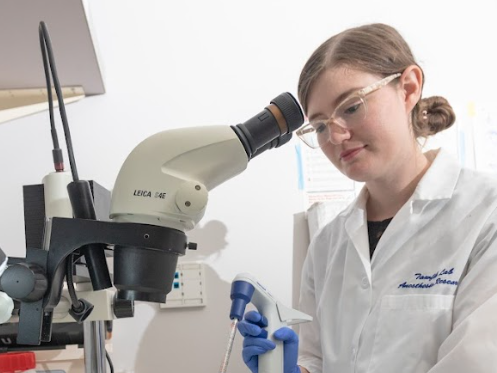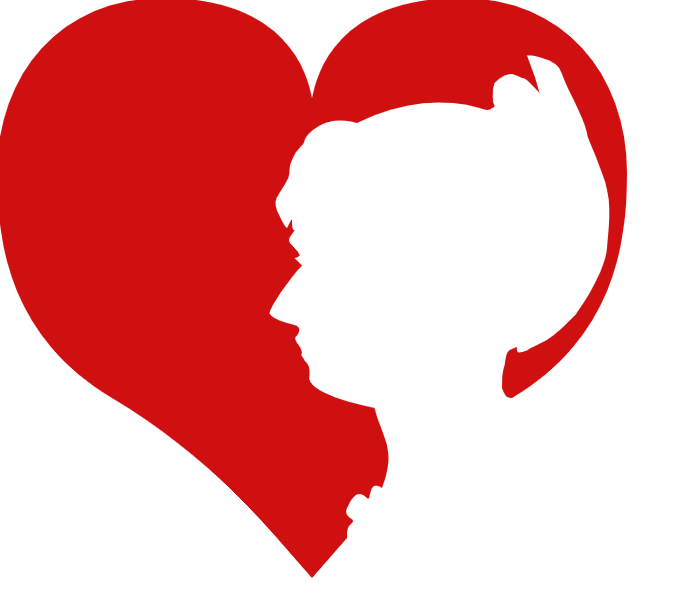In previous ASC volunteer spotlights, we’ve featured science communicators who plan our annual conference, coordinate our year-round course offerings, and lead our marketing and communications team. This time, we’re featuring our blog editor, Amy Nippert. Scott Hershberger (ASC’s newsletter editor) talked with Amy about her lab research on chronic pain, her involvement in science communication on Wikipedia, and her tips for science communicators interested in writing for our blog.
Scott Hershberger: What do you do in your day job?
Amy Nippert: I study chronic pain in a biomedical research laboratory at Stanford. I’m looking at the spinal cord and how inflammatory signals interact with chronic pain. A complex cascade happens when you have an injury, which sometimes leads to chronic pain and sometimes resolves, depending on the type of injury and the person. I’m interested in learning which signals cause an injury to tip into chronic pain. I’m focused on glial cells, which are several cell types that work to support neurons and respond to perturbations in the environment. My pet hypothesis is that some of those environmental perturbations in response to an injury that are initially helpful might cause chronic pain if they overcorrect or don’t resolve.
I also teach grant-writing workshops to PhD students and postdocs. It’s not scicomm in the traditional sense, because it’s scientist-to-scientist, but it has been very rewarding.

SH: What is one enjoyable science communication project that you’ve been involved in?
AN: One overlooked science communication option is Wikipedia. Wikipedia is often people’s first stop whether they’re a student in the sciences, or someone just Googling the medication they’re taking or the disease they have. Having a reliable source of plain-language information is really helpful.
I used to be part of Wikipedia’s Women in Red project. A red link in Wikipedia is a link that’s important, but there’s no page for yet. There is a pretty bad bias in who actually ends up in Wikipedia. Lots of famous women, no one has taken the time and effort to make the page for them—which means when you look them up, you’re not getting that reliable summary of information about that person’s life.
I started working on it in late grad school, probably three or four years ago. It’s definitely something you can dip in and out of, which is one reason I think it’s a great choice for someone who wants to do some scicomm but can’t commit to a more traditional linear route.
It’s super easy—it’s like Google Docs. I go in there once in a while on pages related to my scientific expertise. Or if I hear a cool story about a scientist, I’ll see if they have a Wikipedia page, and if they don’t, I’ll try to make one for them. Thankfully, there are fewer women in red now. Often when I look someone up to write a page, there’s a page already, which I’m super excited about.

SH: What is the process of creating or editing a Wikipedia page like?
AN: It’s a very rigid process, which I think, as a creative person, sometimes is a little bit of a bummer. One of the rules is that you need at least three sources to even start a page. And those have to be someone else writing about the person, which does introduce its own bias. So the first thing is just making sure there’s enough info to have a page. Then you make sure basically every single sentence has a citation, and you also make sure that everything that you mentioned is cross-linked to other pages. It’s not difficult, but it is very sentence-by-sentence.
SH: Can you talk about the ASC blog and your role as blog editor?
AN: The blog is a nice way that science communicators can talk about what they do and learn about what others do as well. It’s not communicating about science, it’s communicating about science communication, which is a critical difference.
As blog editor, I guide what we’re looking for in the blog. I come up with calls for pitches that people can respond to, and then I serve as a filter to determine whether someone’s idea is a good fit for us, or maybe it would be better in a different medium or a different website. Once it is a good fit for us, I do some general editing. Because many posts are people’s personal stories, I’m not doing a lot of heavy editing, but we do want to keep our stories pretty short and focused.
Also, I’m responsible for the nuts and bolts of posting articles to the blog (I do have some people helping as well). Then I hand it over to our marketing and communications group, and they make sure that it gets some visibility on social media.
SH: What tips do you have for people thinking about pitching an idea for a blog post? What topics would you like to get more of?
AN: I’m interested in hearing more about how people are handling some of the current changes in the world. How are you dealing with ChatGPT? How are you dealing with how Twitter has changed? How are you dealing with a post-COVID world? Those big things are a cool opportunity to hear a science communicator talk about how they’ve adapted or pivoted. It would be really helpful for other science communicators.
And I always love a nice article that gives some helpful insights or hard lessons learned in a very specific career in science communication of any kind. I think those are the most useful articles. For example, we have some great articles about how to teach science communication, and those are some of our most popular posts. People really like practical articles with tangible suggestions.
SH: What do you enjoy most about being involved with ASC?
AN: I think science communicators are the most interesting people you’ve ever met. Part of the joy for me is getting support and ideas from other people. We have an established community at this point, where you see a lot of the same faces again and again.
On the other end, I love giving people advice. So as people join and ask questions, I enjoy being able to share resources that I’ve found over the years.



I quite enjoy this article, but my favorite bit is the photo caption. It really made me chuckle.